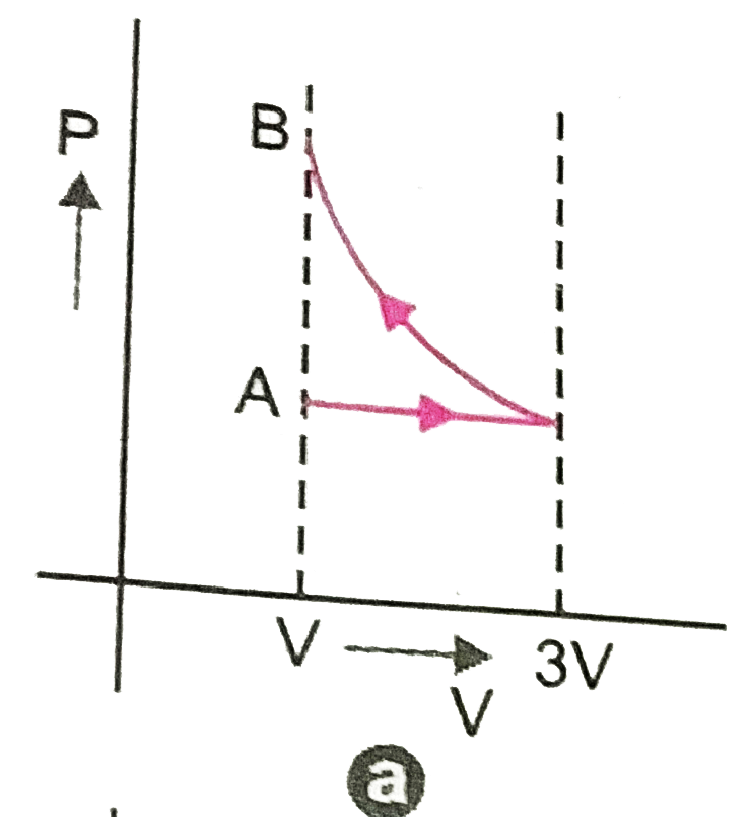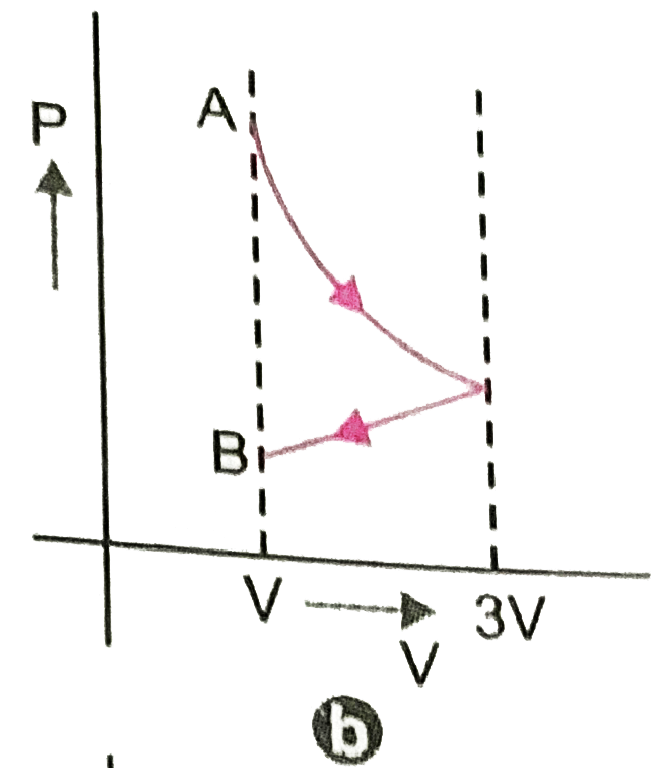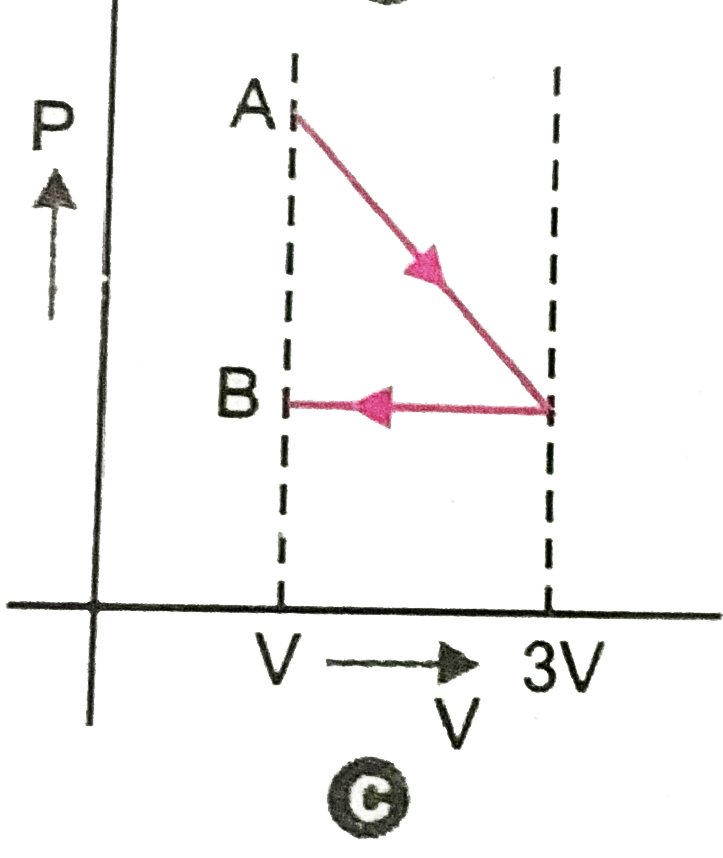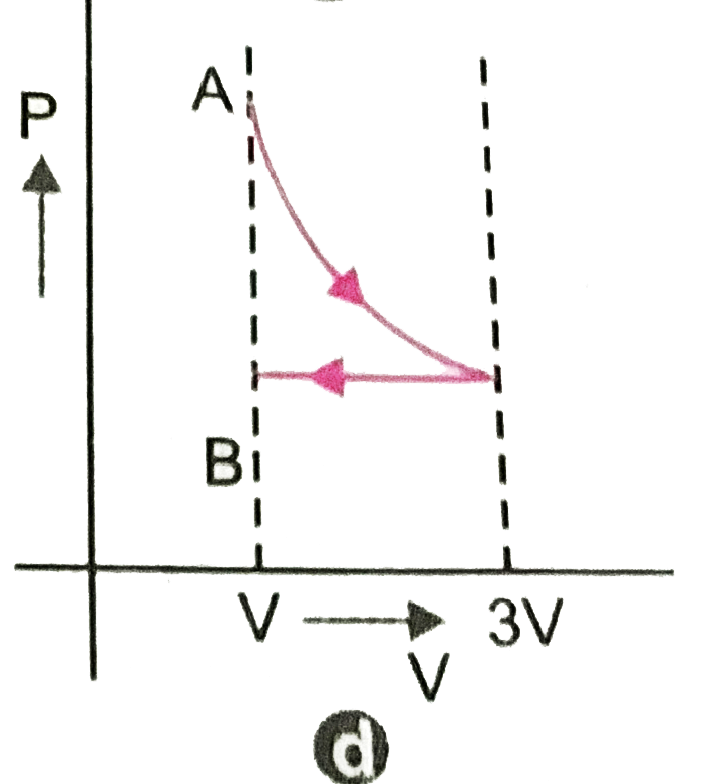Two moles of an ideal gas have an initial kelvin temperature Ti and absolute pressure Pi the gas undergoes a reversible isothermal compression from an initial volume Vi to a final volume 0.5 Vi
which one of the following expressions represents the final pressure of the gas ?
0.5Pi
2pi
4Pi
pi/31.7
The correct Answer is:B
Topper's Solved these Questions
- BOOK - RESNICK AND HALLIDAYCHAPTER - THE FIRST LAW OF THERMODYNAMICSEXERCISE - PRACTICE QUESTIONS ( INTEGER TYPE )3videos
THE FIRST LAW OF THERMODYNAMICS
- BOOK - RESNICK AND HALLIDAYCHAPTER - THE FIRST LAW OF THERMODYNAMICSEXERCISE - PRACTICE QUESTIONS ( MORE THAN ONE CORRECT CHOICE TYPE )9videos
THE FIRST LAW OF THERMODYNAMICS
- BOOK - RESNICK AND HALLIDAYCHAPTER - TEMPERATURE, ZEROTH LAW OF THERMODYNAMICS AND THERMAL EXPANSION EXERCISE - PRACTICE QUETIONS (Integer Type)4videos
TEMPERATURE, ZEROTH LAW OF THERMODYNAMICS AND THERMAL EXPANSION
- BOOK - RESNICK AND HALLIDAYCHAPTER - THE KINETIC THEORY OF GASESEXERCISE - PRACTICE QUESTIONS72videos
THE KINETIC THEORY OF GASES
Similar Questions
Two samples A and B of a certain gas, which are initially at the same temperature and pressure, are compressed from volume V to V /2. A is compressed isothermally, while Bis compressed adiabatically. The final pressure of A is
View SolutionOne mole of an ideal gas goes from an initial state A to final state B via two processs : It first undergoes isothermal expansion from volume V to 3V and then its volume is reduced from 3V to V at constant pressure. The correct P−V diagram representing the two process in (figure)
View Solution
Knowledge Check
- Question 1 - Select One
Two moles of an ideal gas have an initial kelvin temperature Ti and absolute pressure Pi the gas undergoes a reversible isothermal compression from an initial volume Vi to a final volume 0.5 Vi
How much heat is exchanged with the environment? If heat is exchanged, is it absorbed or released?ApiVi(In a) , ReleasedBPiVi(In 2) ,absorbedC(0.5)Pivi releasedD(0.5)PiVi absorbed - Question 2 - Select One
Two moles of an ideal gas have an initial kelvin temperature Ti and absolute pressure Pi the gas undergoes a reversible isothermal compression from an initial volume Vi to a final volume 0.5 Vi
The ratio of the molar specific heat capacity at constant pressure to that at constant volume, γ,for diatomic hydrogen gas is 7/5. In an adiabatic compression, the gas, originally at atmospheric pressure, is compressed from an original volume of 0.30m3 to 0.15m3 What is the final pressure of the gas?A2.0×105PaB2.7×105PaC3.0×105PaD3.7×105Pa - Question 3 - Select One
One mole of an ideal gas goes from an initial state A to final state B via two processs : It first undergoes isothermal expansion from volume V to 3V and then its volume is reduced from 3V to V at constant pressure. The correct P−V diagram representing the two process in (figure)
A B
B C
C D
D
One mole of an ideal gas goes from an initial state A to final state B via two processs : It first undergoes isothermal expansion from volume V to 3V and then its volume is reduced from 3V to V at constant pressure. The correct P−V diagram representing the two process in (figure)
View SolutionOne mole of an ideal gas goes from an initial state A to final state B via two processes : It first undergoes isothermal expansion from volume V to 3V then its volume is reduced from 3V to V at constant pressure. The correct P-V diagram representing the two processes is
View SolutionTwo samples A and B of a gas are initially at the same temperature and pressure are compressed from volume V1 to V/2 (A isothermally and B adiabatically). The final pressure is
View SolutionTwo sample A and B of a gas initially at the same pressure and temperature are compressed from volume V to V/2 (A isothermally and B adiabatically). The final pressure of A is
View SolutionTwo samples, A and B of a gas at the same initial temperature and pressure are compressed from volume V to V/2, A isothermally and B adiabatically. The final pressure of A will be
View Solution

